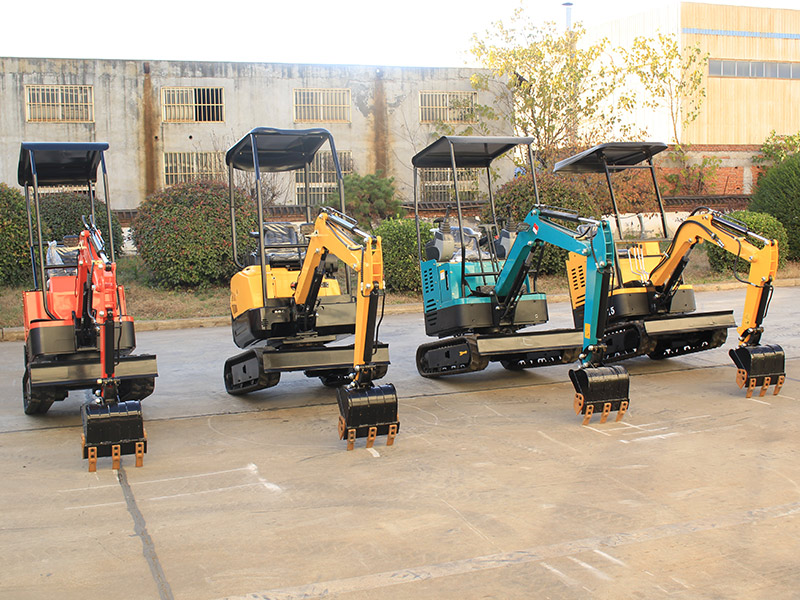
Trenching can be said to be one of the basic operations of small excavators. It seems simple, but in fact it has a high technical content. In the process of digging ditches, many novices often have the problems of not straight excavation, deviation excavation, width and width at the bottom of the ditch. So what are the operation skills of trenching?
 1.Trenching must be straight
1.Trenching must be straightThe most basic principle of trenching is to follow the straight principle. Generally, the route of lime ditch will be drawn on the construction site. The center line of the chassis of small excavator is aligned with the lime line, and the bucket teeth in the middle of the bucket correspond to the lime line, so it is not easy to deviate.If there is no lime line, you can press out a connecting line with the track first, and the track trace left can play the role of lime line. The bucket movement can be adjusted according to the track marks left by backward.
When formally excavating, take the surface layer first and then the lower layer. Never excavate to the end at one time, especially the excavation of deep ditches; When digging a ditch larger than the bucket width, dig both sides first and then the middle.
Many novices can’t dig ditches well, mainly because they don’t follow the principle of tidiness, and the detailed operation needs to be further improved. From the beginning of opening V-shaped ditch to the end, the slope should maintain the same slope. Of course, the soil quality and ditch depth are different, and the slope also needs to be adjusted accordingly.
The two lines on the drawing are straight, which is the premise to keep the ditch slope flat. When digging the trench, the manipulator must pay attention to the loose soil at the edge of the trench to prevent the soil from falling, and should clean it with a bucket in time.
The control of the bottom of the ditch is very important. At this time, the skills of square throwing and leveling need to be used. If the purpose of trenching is to install water pipes for drainage, a certain slope is required at the bottom; If it is a house foundation pit, the bottom is required to be horizontal.In fact, many operators can’t see the height of the bottom of the ditch. When there are surveyors, they can ask the constructors to measure through instruments while digging. You can find some references when you don’t have them. You should get off the bus and observe more.
Three methods of trenching
(1) Riding excavation type: mainly in the open area, the excavator is parked in the middle of the ditch to be excavated, and the bucket is dug between the two crawlers.
(2) Straight side type: it refers to the narrow area of the site, such as the clear water channel. The bucket only digs along the track line on one side (the skill of slope needs to be used here).
(3) Facing type: mainly for the excavation of highway culvert ditch, which means that the excavator is parked 90 degrees facing the ditch edge (it should be noted that when the ditch is relatively deep, the bucket oil cylinder may touch the ditch edge)
In short, in the process of trenching, the manipulator needs to pay special attention to the straightening, the flatness of the slope and the control of the bottom of the ditch, and choose the appropriate trenching method. In fact, trenching is not difficult.